Clay is a great soil to have in your native garden – it’s full of nutrients and retains water. BUT, not all natives like it! In fact, most plant labels say, ‘well drained soils’, which can put us off.
However, I’ve been growing native plants in clay for over 20 years and have had many successes. These came from trial and error, and learning over time (I must be a slow learner) to work WITH the conditions rather than against them.

So how do I prepare the soil for planting natives?
I’ve never used the ‘add gypsum or sand’ approach, as my garden is too big. And any imported materials are expensive and difficult to transport, for me. So my philosophy evolved to working with the existing conditions.
For a new garden bed, I generally use newspaper or cardboard to suppress the grass and existing cover. Then I dump 75mm of thick hardwood chip on top. Ideally, I leave this for 6 months before planting. The soil underneath is kept moist and the worms go wild, making the soil quite friable and easy to plant into.

For existing gardens, I add the same kind of mulch (every couple of years) as this keeps the soil well conditioned. I’ve occasionally used native fertilisers and a bit of pelleted chook manure, but this is an exception rather than the rule.
I avoid planting when the clay is hard and dried out. I’ve found this is a recipe for dead plants and wrecked knees (trying to get the spade into the soil).
I also avoid planting when we’ve just had heavy rain, as the soil structure is waterlogged and can break down – better to wait a few days to a week to let some of the water drain.
I ALWAYS water the plant when planted, even if the weather app says rain is on its way. If I can I water every couple of days for a week or so, to give the plant time to adjust.
What size native plants should I plant?
I use tubestock whenever I can. Sometimes I will put in larger plants, but it does pose more challenges keeping water up to the new plant, for a month or so as it gets established.
In areas where wallabies or rabbits abound, such as a rural area, I will put bags around the plants to protect them somewhat. It’s not a defence against kangaroos unfortunately, but otherwise is good value.
So which native plants work best in clay?
Here is a list of plants that have been successful in my garden in the Hunter Valley. We have no frost, being on a hill, but do have strong winds. Rainfall averages 900mm. The topsoil in many places is quite shallow, and so roots need to be able to spread out.
It’s always important to consider YOUR conditions – soil, frost, climate, sun and shade before making any planting decisions. You can check a few databases like the one on this site and the APS NSW one.
Trees or tall native shrubs for clay
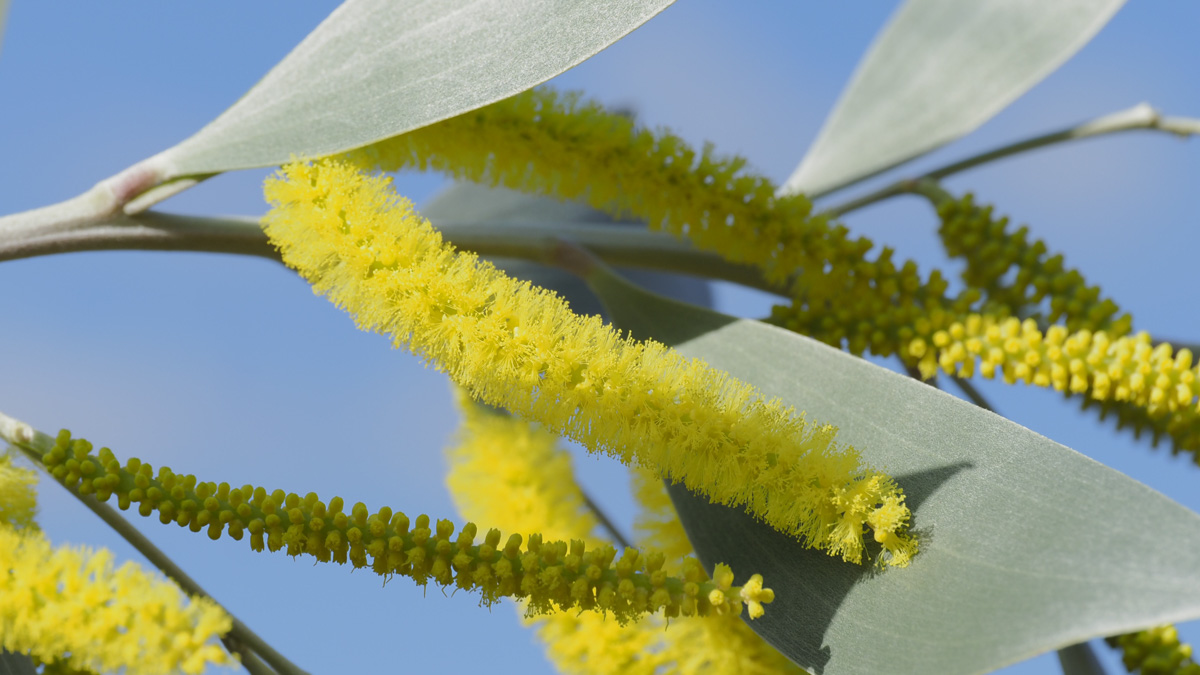
Acacia binervia ‘Sterling Silver’ is a lovely small tree or wide shrub. It’s only been in the garden since 2021 but its foliage is just spectacular, complemented by yellow rod like flowers in spring.

Acacia cultriformis, or Knife Wattle, is a beauty. It grows 2 x 3m or taller, with grey triangular foliage and masses of golden yellow flower balls in spring.

Backhousia citriodora, Lemon Myrtle, has been growing strongly for over 15 years. Beautiful lemon flavoured leaves and stunning white/cream flowers. I recently used the leaves to flavour fish!
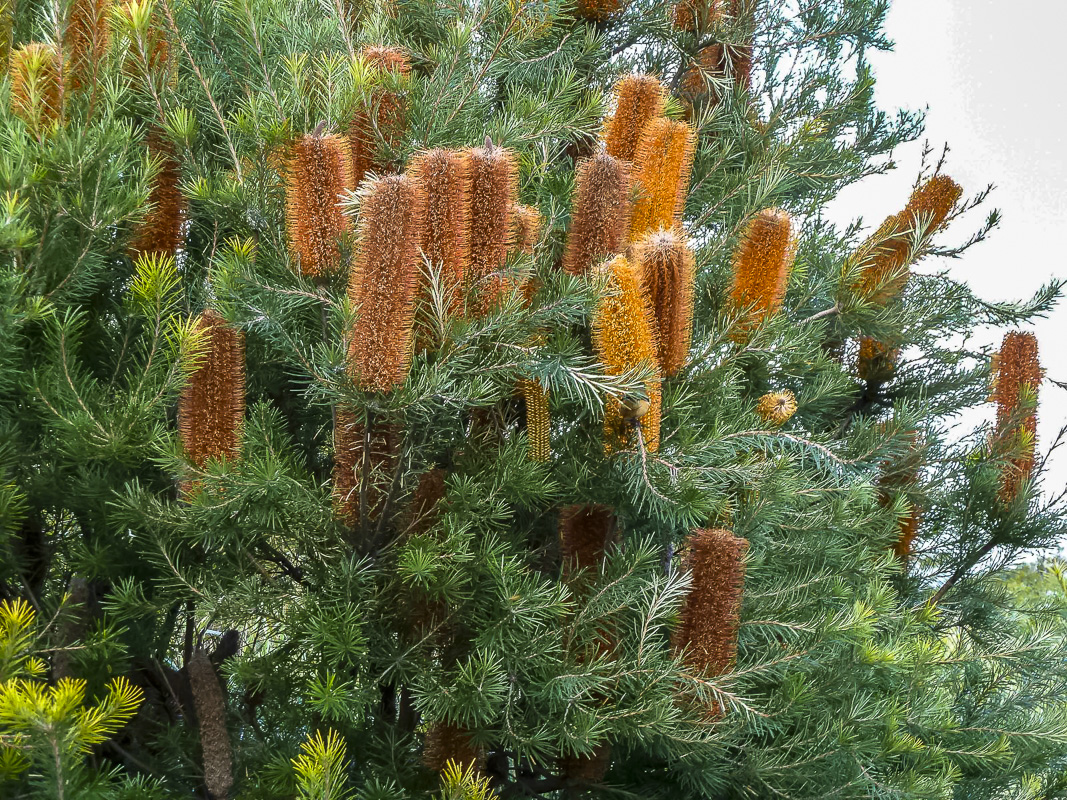
Banksia ‘Giant Candles’ is a winner. Growing large (>4m if I let it), it produces a huge number of large banksia cones every autumn. I planted 3 and they have been growing well since 2005. One trunk fell over so I chainsawed it down and now the plant has resprouted to fill in the hole left.
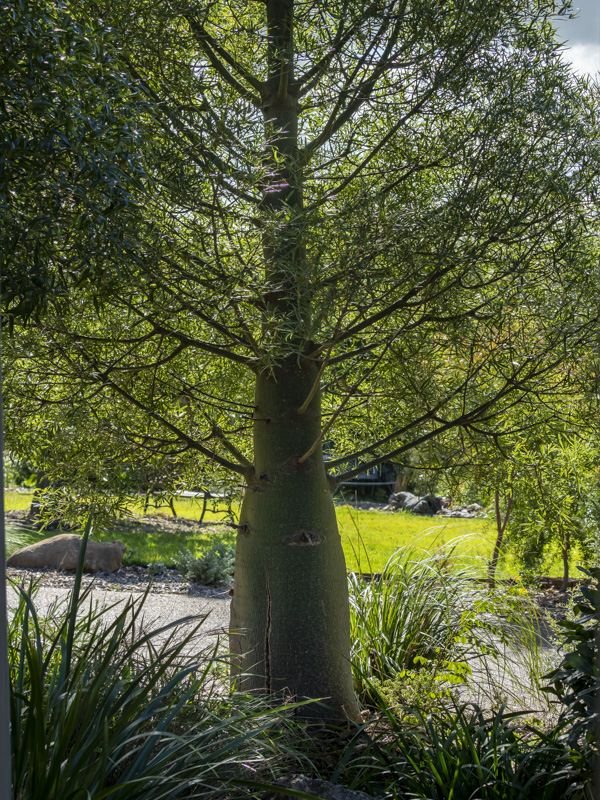
Brachychiton rupestris, Bottle Tree. Three of these have been growing happily since 2012 and their trunks are becoming quite bulbous.
They are particularly favoured by the honeyeaters, although flowering isn’t all that obvious. They are underplanted with various shrubs and grasses.
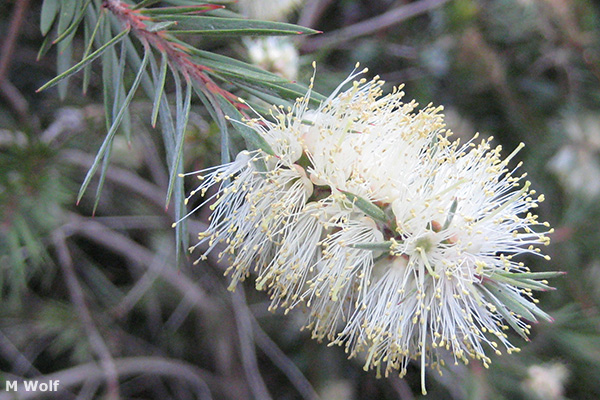
Callistemon salignus is well adapted to clay. I have created a windbreak using them (along with Melaleuca armillaris and they both have been growing well since 2004. They have beautiful red/pink new growth and small creamy coloured flowers. Perfect habitat trees.

Dodonaea megazyga, Forest Hop Bush, is a lovely plant, not often seen in nurseries. They were left over from a regen project at a local nursery, and are indigenous to my area. They have flakey bark, stunning lime green leaves and exquisite small flowers.
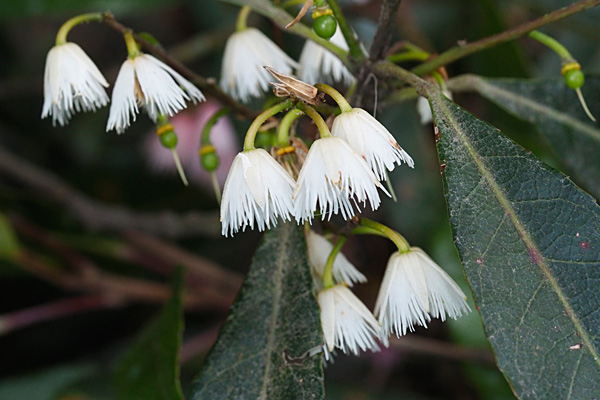
Elaeocarpus reticulatus (white and pink flowered), Blueberry Ash. These small trees produce a profusion of flowers and then blue berries, looking good all year with their glossy green leaves. I even transplanted one in 2010 and it coped well and is very happy.

Hakea francisiana ‘Pink Pokers’ has grown remarkably well despite being a tree from Western Australia.
This one does receive good drainage being on a slope. It is a favourite with the honeyeaters.

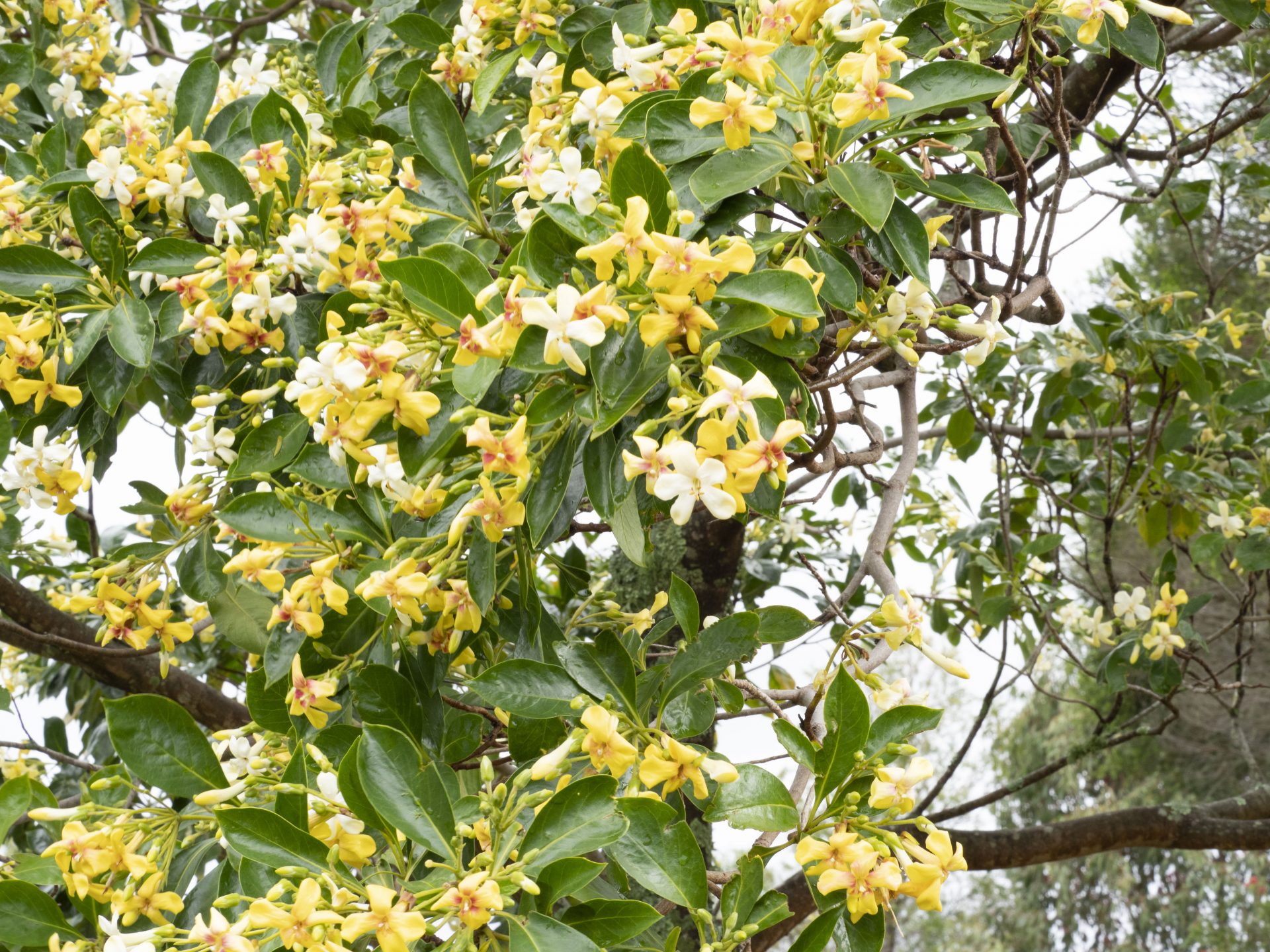
Hibiscus ‘Barambah Creek’, ‘Ian’s Lemon’ and the indigenous H. heterophyllus all grow well. ‘Barambah Creek’ has proven to self seed copiously and so I need to watch it doesn’t take over. It has soft grey foliage and lovely pink flowers. The other two mentioned above have less flowers, although they are just as beautiful.
Hymenosporum flavum, Native Frangipani, is indigenous to the area, which is fortunate as it constantly self seeds. I regularly dig up small plants to replant. The perfume on flowering is delicious. The plant tends to drop its leaves in summer and autumn and can look a bit straggly but then comes back strongly through winter.

Melaleuca nodosa was planted in 2009. It is in damp clay soil below the pool. It’s a prickly foliaged plant and so great for the little birds and insects.

Toona ciliata, Red Cedar, a stunning tree, with wide canopy, though of course is not for every garden. In the right conditions, it can grow quite large. In my garden, it is about 4-5m tall, and used as an avenue along a driveway. It is deciduous in my conditions with lovely red foliage in autumn.
Smaller native shrubs for clay
Banksia ericifolia and Banksia integrifolia (the prostrate ‘Roller Coaster’) grow really well in clay. These two have been the most successful. Some of the other banksias, including the lovely Western Australian ones don’t do so well, and only last for 3 – 5 years.
Callistemon are very adaptable to clay. I have many growing in the garden such as Callistemon ‘Prestige Pink’, Callistemon ‘Endeavour’ and Callistemon ‘Little John’.
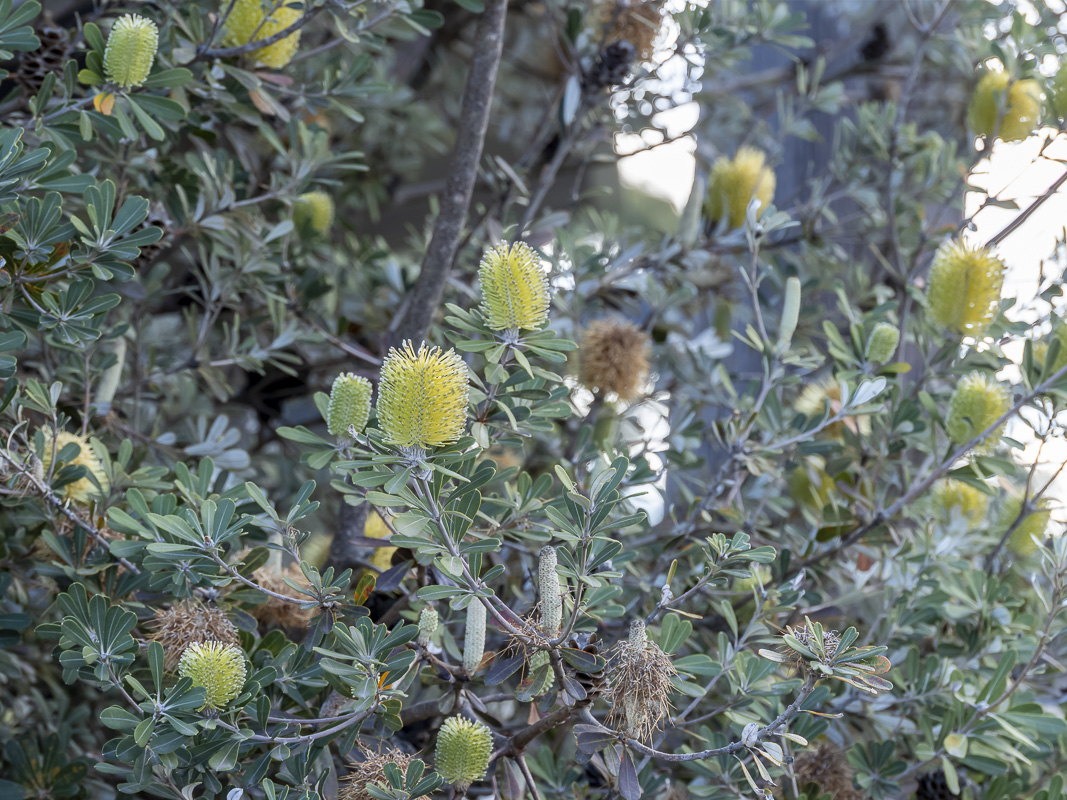
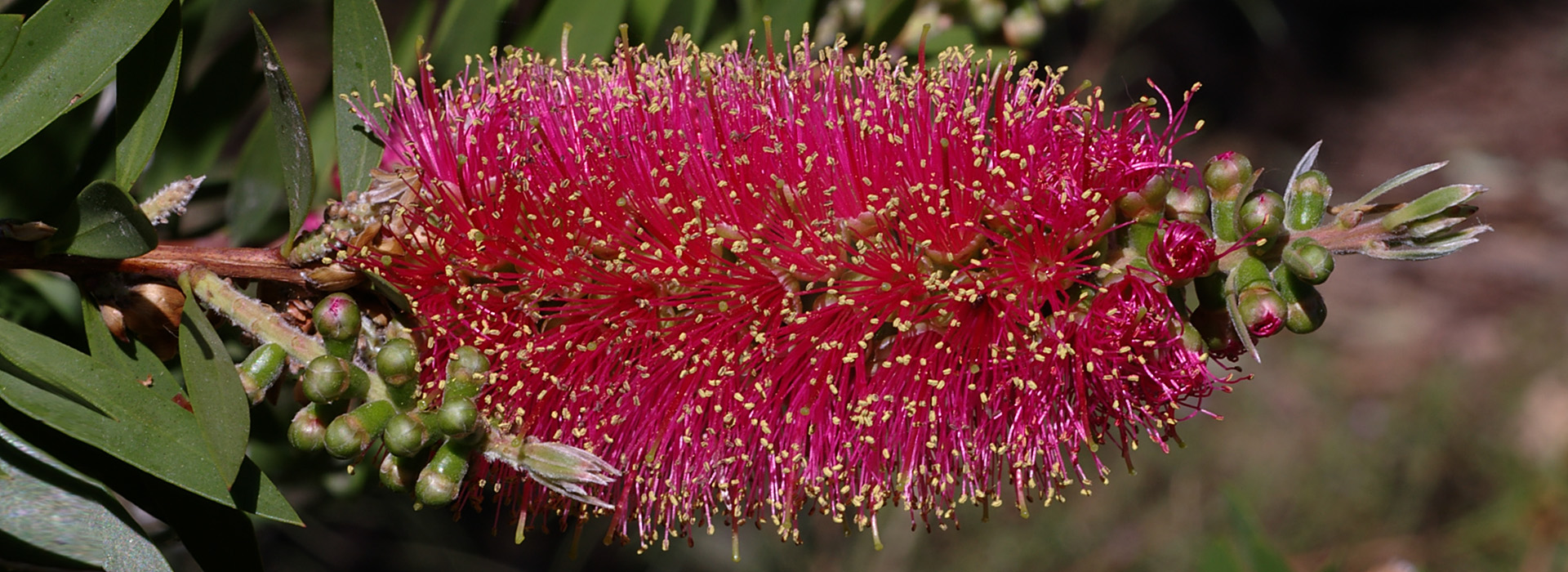
Calothamnus villosus has been quite successful and growing well for 10 years. Their soft grey foliage and red flowers are an attractive addition to the garden.
Chamelaucium, Wax flower – these warrant a mention. While they only last about 5 – 10 years, they are so beautiful in flower, that I regularly replant when one gives up the ghost.
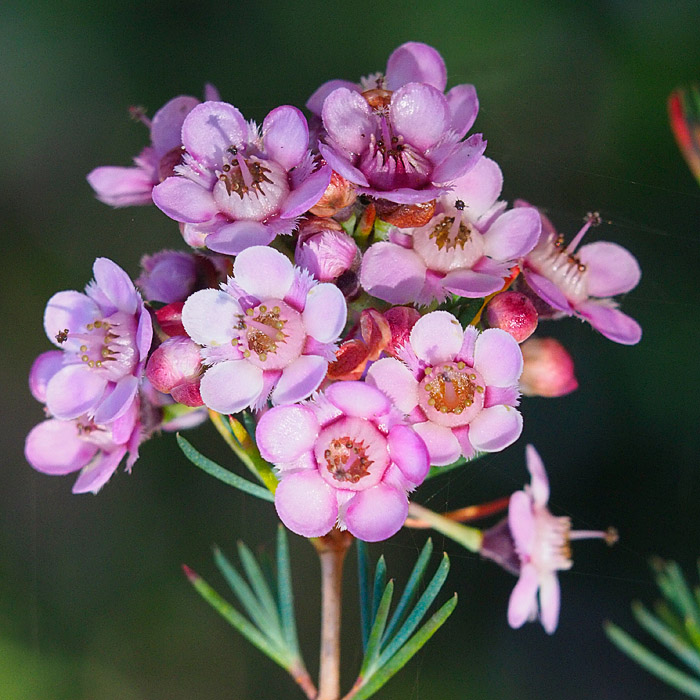

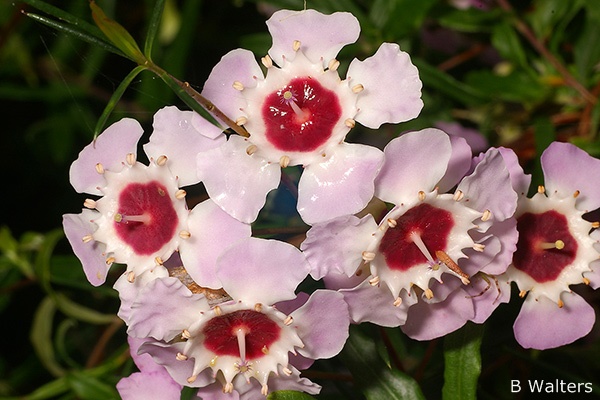
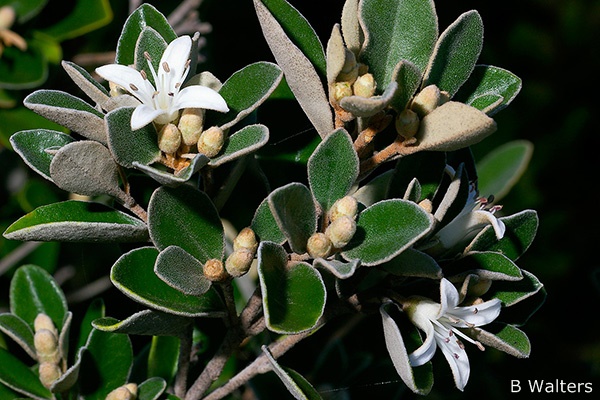
Correa alba grows really well, despite being a coastal plant and so normally used to more sandy conditions.
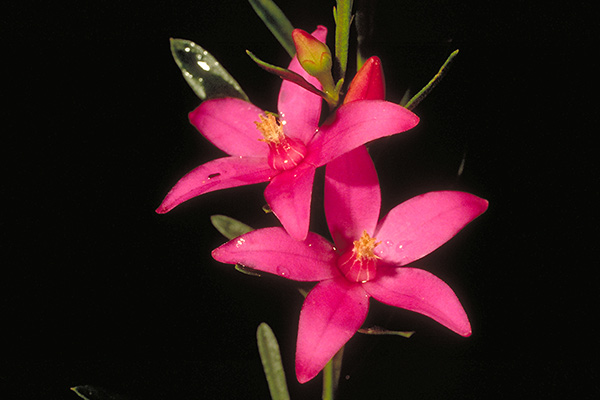
Crowea ‘Festival’ – a very robust small shrub, with displays of pink flowers through much of the year. It is a hybrid of Crowea exalata and Crowea saligna, a chance seedling.
Grevillea ‘Honey Gem’. This was the first plant I put in the garden in 2005 and most are still surviving and thriving. They only grow to about 2m in my garden, and have strong deep roots which helps them resist the wind.


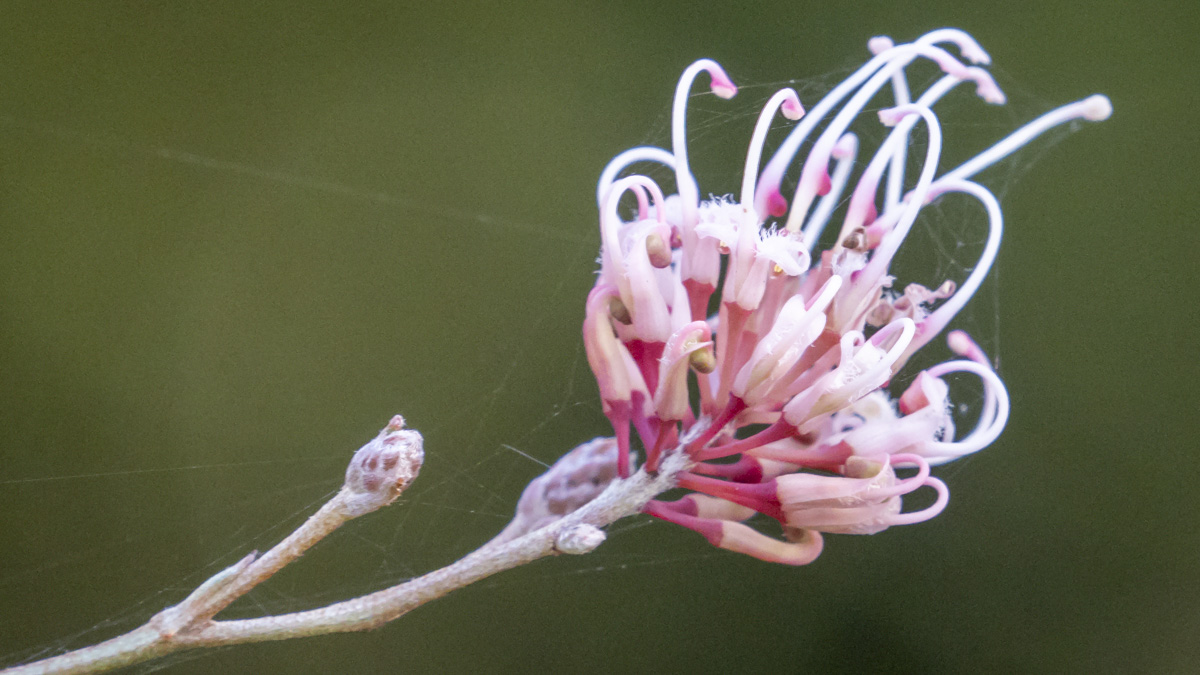

Grevillea endlicheriana is another stunner. I liken it to a fairy plant, with long arching canes and small delicate pinkish flowers along the stem which dance in the breeze.
Grevillea ‘Forest Rambler’ – I’ve been very happy with this one which is living in quite damp clay for 4 years. Perhaps it won’t last as many grevilleas do not like wet roots, but so far going well. Soft pink flowers!
Grevillea ‘Orange Marmalade’ is theoretically a 2m shrub, but has grown massively – it is about 2m tall but also 2m wide. Despite this, its flowers are really lovely, a mix of yellow, orange with tinges of mauve.
Grafted grevilleas – although I don’t have many, the three I have put in have been growing really well for 10 years. I have ‘Miami Pink’, ‘Purple Haze’ and ‘Shaggy’. The last one had to be pruned, as the graft was breaking through, so we will see if that survives, but the other two know no bounds!
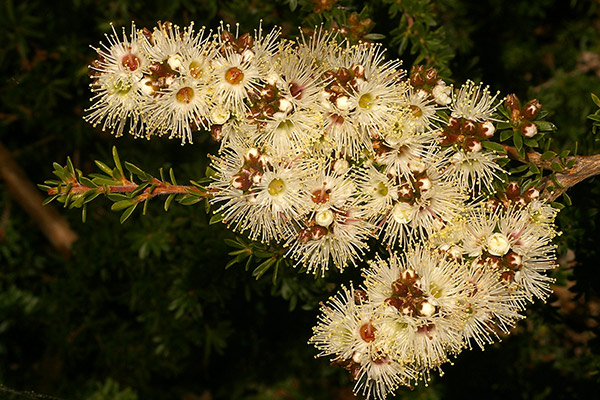
The local Kunzea ambigua also grows extremely well, and has long arching stems with soft white flowers all up the bough in spring and summer.

Kunzea baxteri is another surprise success story, as it comes from Western Australia and so would not normally be successful due to the different climatic conditions. However, they have been growing now for about 18 years and flower annually with a large number of flowers over the bush.
Leptospermum flavenscens including L. petersonii, ‘Cardwell’, ‘Pink Cascade’ and ‘Lavender Queen’ all love the clay conditions. They create stunning displays of white flowers.

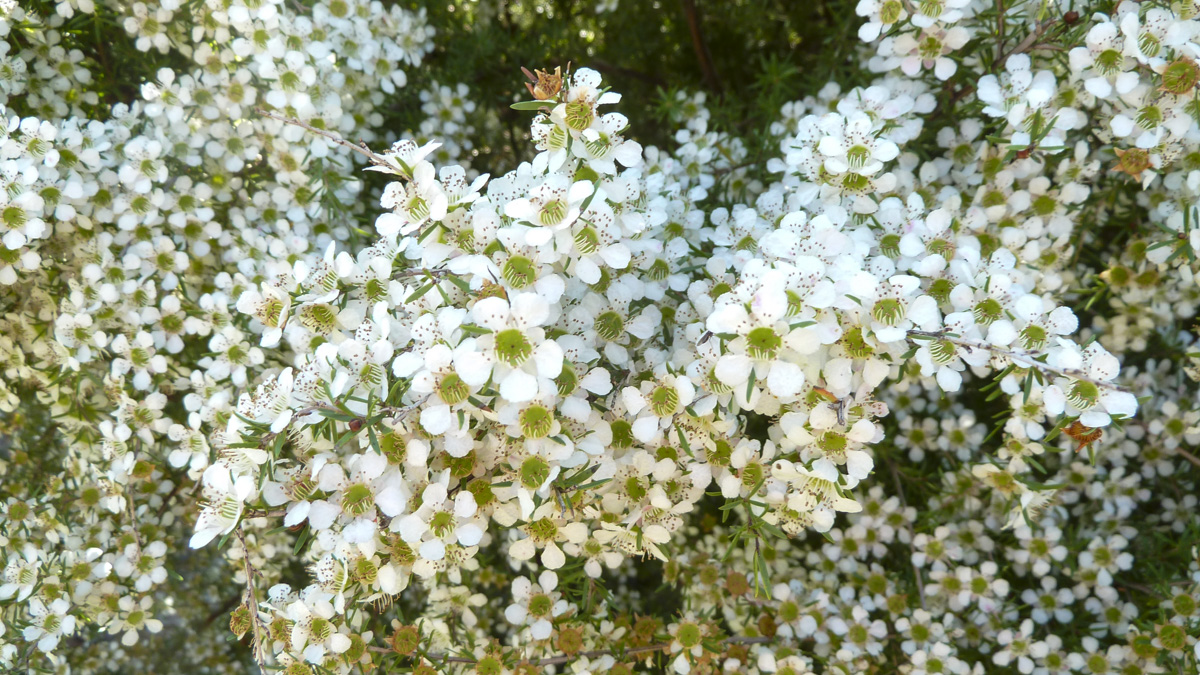

Plectranthus parviflorus ‘Blue Spires’ is a small shrub, under 0.5m, with soft grey leaves and spires of blue flowers from spring to autumn.
Xanthostemon chrysanthus ‘Fairhill Gold’, Golden Penda, does surprisingly well. This is a plant from Queensland, yet it has responded very well to my conditions and the flowers are spectacular in autumn – a glorious yellow.
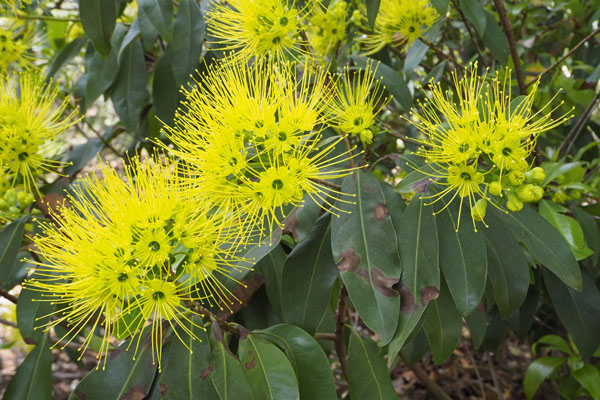
Native grasses and groundcovers for clay soil
Kangaroo paws (Anigozanthos) work very well in my garden. I mostly plant Anigozanthos flavidus, and particularly the ones from Angus Stewart. They do sometimes get a bit of black spot due to humidity, but otherwise flower quite copiously for much of spring and into summer and even autumn. The birds love them, even the dead and dying flower heads.
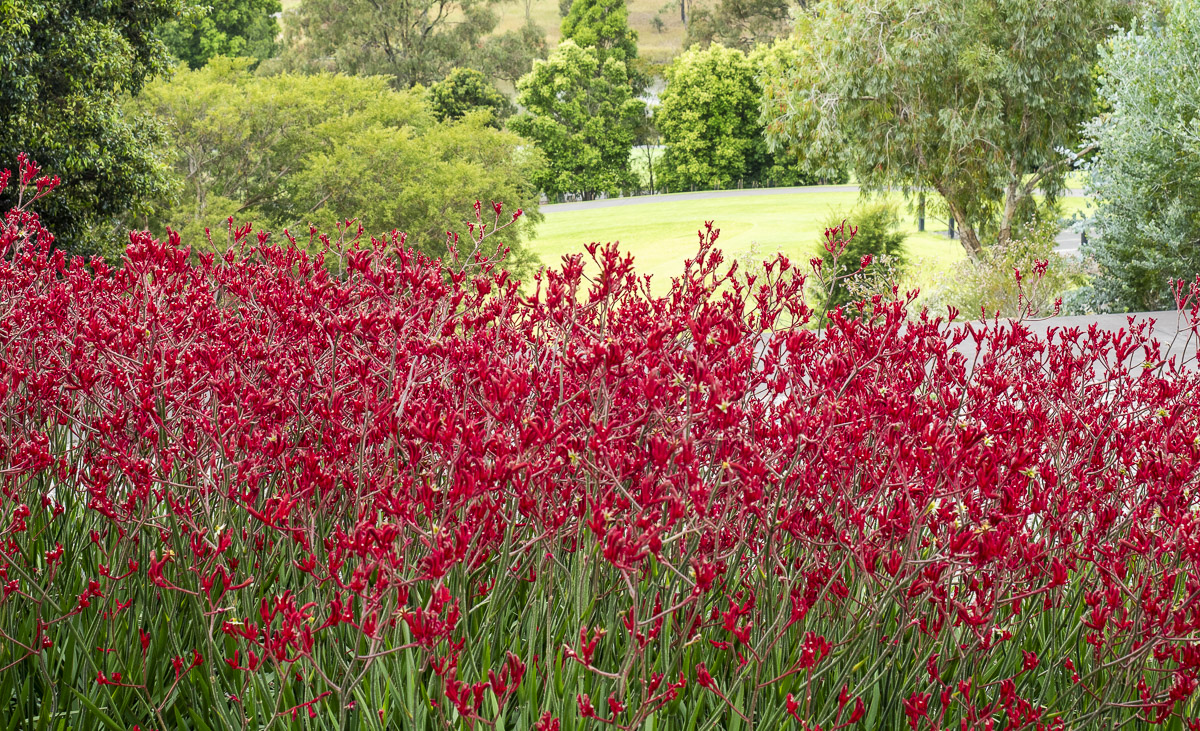
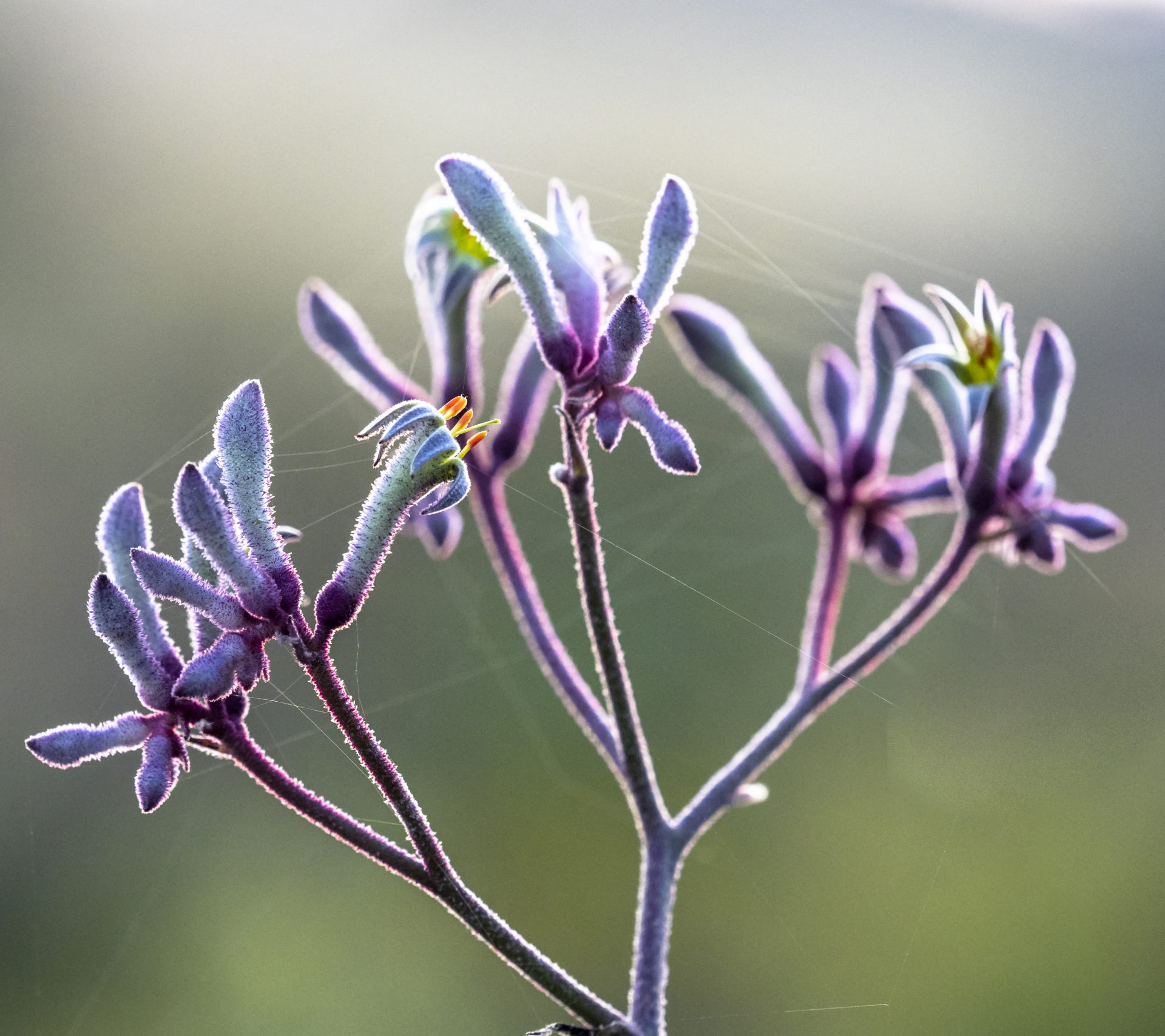
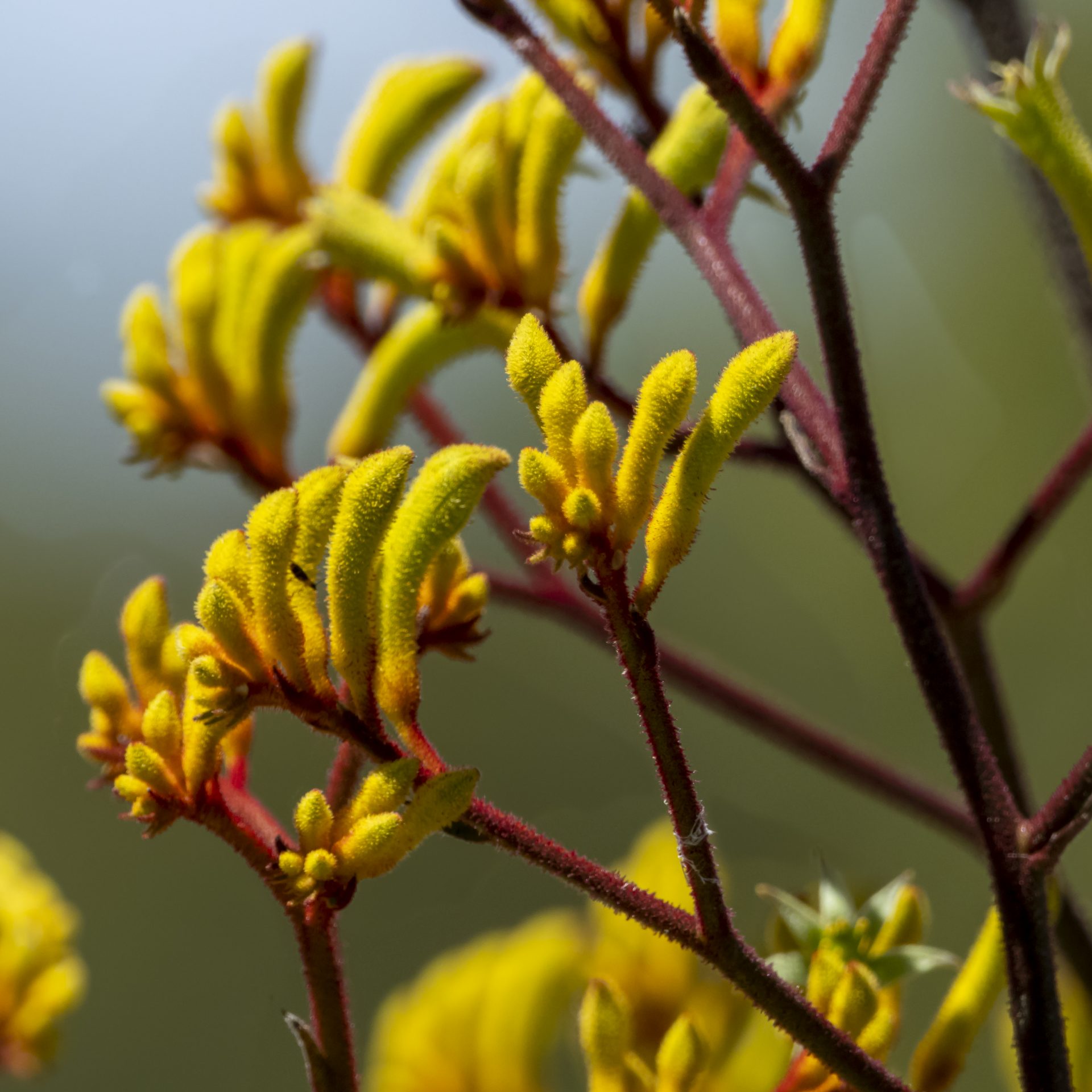

Carpobrotus glaucescens, Pigface, sprawls over the garden, wherever it can. It has to be pruned back from paths and over rock from time to time, but those lovely bright pink flowers are worth waiting for.

Chrysocephalum apiculatum, Yellow Buttons, is another prolific flowering ground covers which seems adaptable to many soils including clay.


Doryanthes excelsa and D. palmeri are fairly slow growing but grow large and their foliage and flower spikes are spectacular. Appreciated by birds for the flowers, and frogs which hang out in the fronds.
Lomandra hystrix and L. longifolia – both are vigorous and spread. L. hystrix is smaller and has limey green leaves – the scent when they flower is that beautiful bush perfume.
Rhagodia spinescens, Saltbush, grows copiously and sprawls through the garden. Its grey green leaves are one of its most beautiful features.
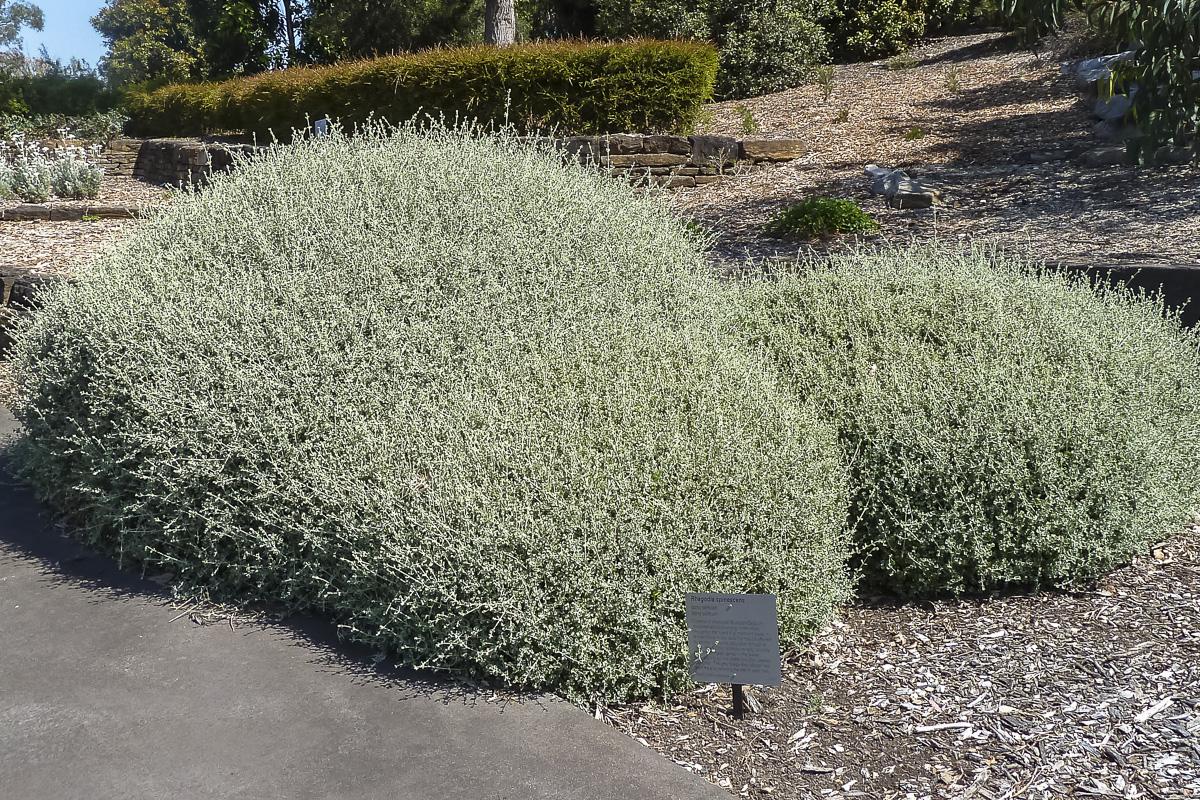
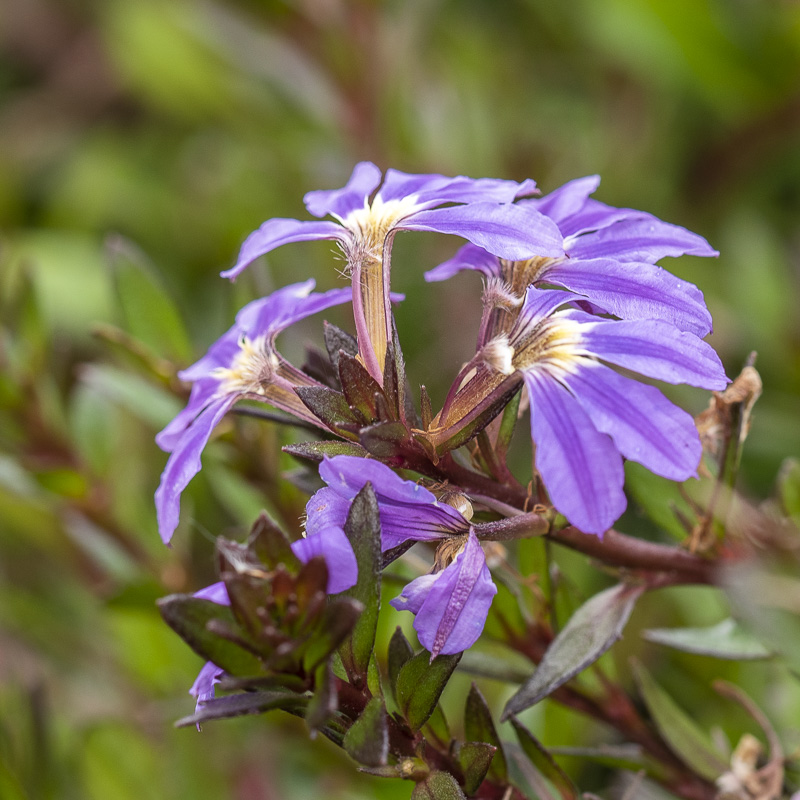
Scaevola aemula grows everywhere throughout the garden. I regularly break off pieces and replant elsewhere to spread these lovely ground covers with their mauve, blue or pink flowers.
Xanthorrhoea johnsonii, grass trees, grow really well and continuously send up flower spikes. These are however on a sloping area and so their drainage is excellent, so perhaps not for very wet spots.
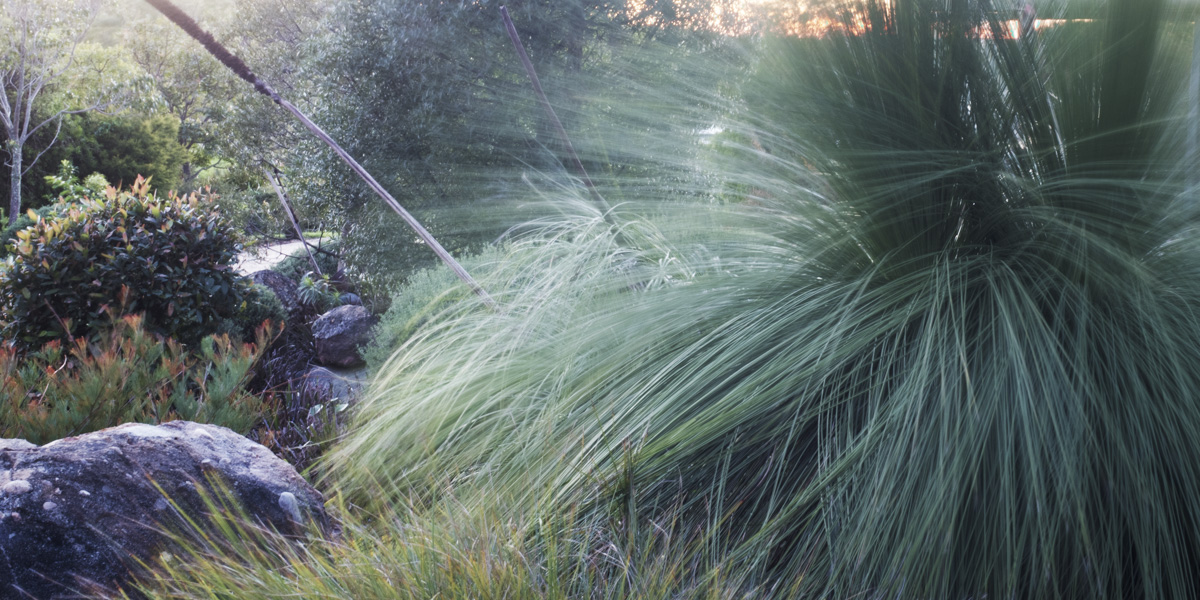
What native plants don’t grow well in clay?
How long have you got? I’ve not had success with Westringias, banksias from Western Australia, boronias (except as annuals), some of the eremophilas (they last about 3-5 years and get leggy), many grevilleas, Zieria,
Happy planting
I hope these suggestions are useful. As you can see, clay is a great soil to have in your native garden. While native plant gardening is still something of a trial and error experience, these ideas may help with your design.
 Australian Native Plants Society (Australia)
Australian Native Plants Society (Australia)












